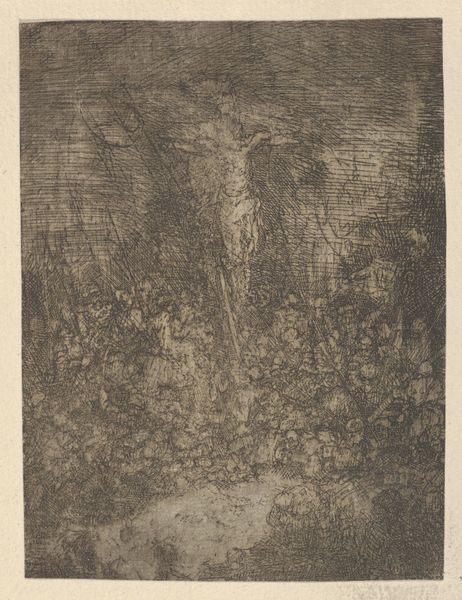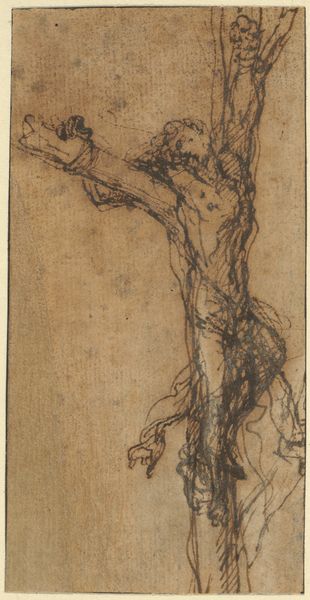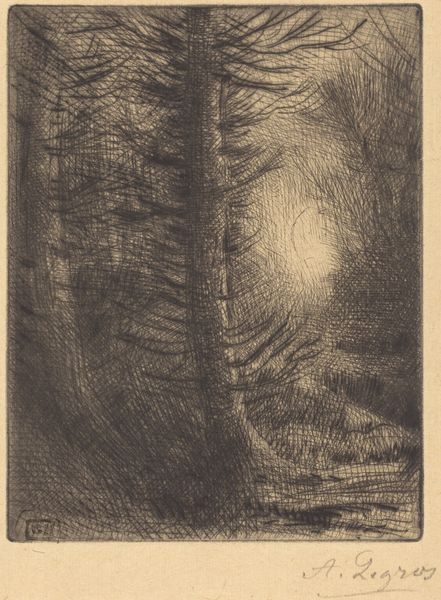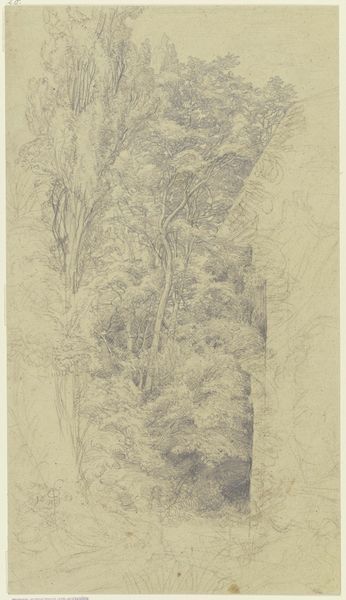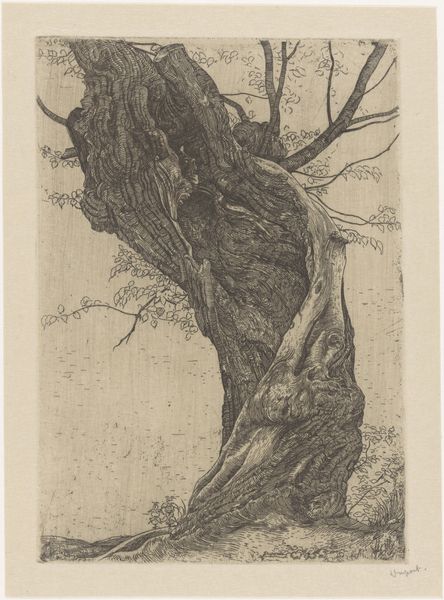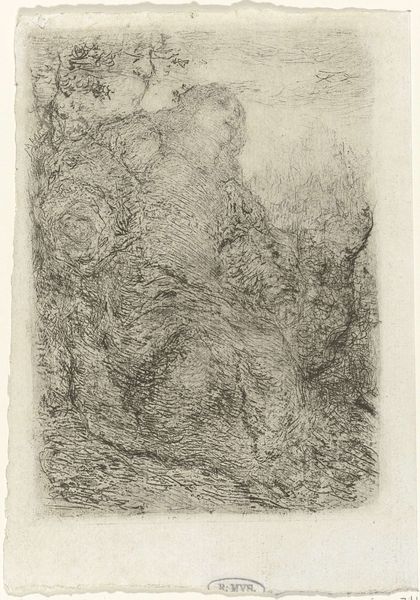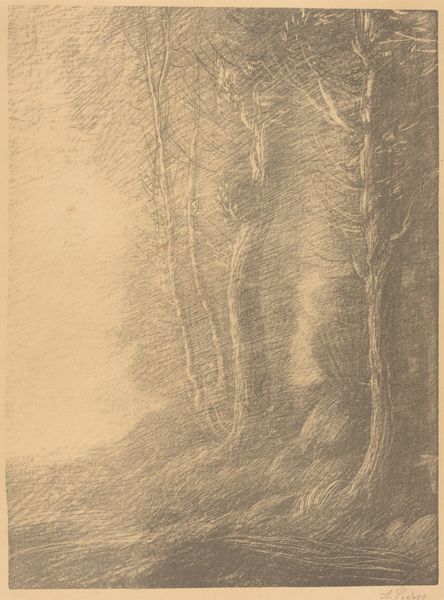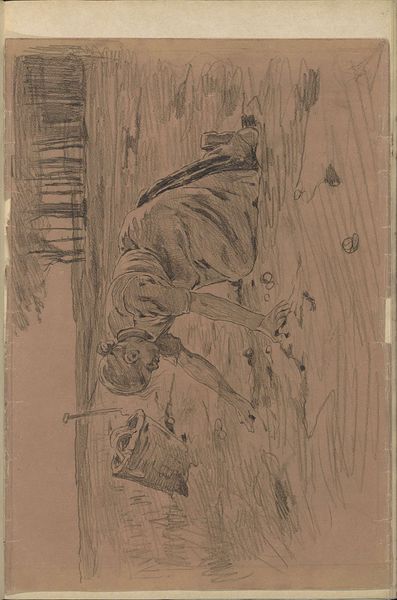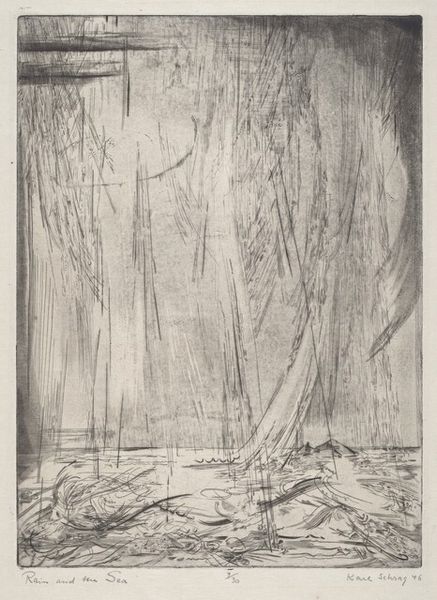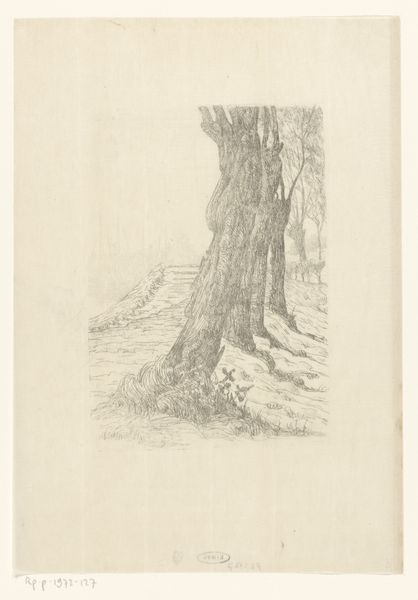![Witchcraft Scene with a Vampire [recto] by Jacques de Gheyn II](/_next/image?url=https%3A%2F%2Fd2w8kbdekdi1gv.cloudfront.net%2FeyJidWNrZXQiOiAiYXJ0ZXJhLWltYWdlcy1idWNrZXQiLCAia2V5IjogImFydHdvcmtzL2RkOWJmZGRmLWViMjktNDY4NS1iYWYxLTI3Y2ZkOGMxMTZmMC9kZDliZmRkZi1lYjI5LTQ2ODUtYmFmMS0yN2NmZDhjMTE2ZjBfZnVsbC5qcGciLCAiZWRpdHMiOiB7InJlc2l6ZSI6IHsid2lkdGgiOiAxOTIwLCAiaGVpZ2h0IjogMTkyMCwgImZpdCI6ICJpbnNpZGUifX19&w=3840&q=75)
drawing, charcoal
#
drawing
#
narrative-art
#
etching
#
charcoal drawing
#
mannerism
#
figuration
#
charcoal
#
history-painting
Dimensions: overall: 32.3 x 20.6 cm (12 11/16 x 8 1/8 in.)
Copyright: National Gallery of Art: CC0 1.0
Editor: This drawing, titled "Witchcraft Scene with a Vampire," is attributed to Jacques de Gheyn II, and appears to be made using charcoal. There's a real sense of drama in this image, like we're peeking into a forbidden ritual. How do you interpret this work within its historical context? Curator: That’s a great starting point. Think about the 16th and 17th centuries, the era of witch hunts, deeply embedded misogyny, and intense fear surrounding female power and sexuality. How does this drawing play into, or perhaps challenge, those anxieties? Editor: Well, there’s the title implying witchcraft, and the almost chaotic lines give it a sense of unrest, fear… and there seems to be a child involved. So the idea of witches harming children? Curator: Exactly. De Gheyn’s choice to depict this scene in such a raw and unsettling manner could be seen as a commentary on the societal anxieties around women stepping outside patriarchal norms. Consider, though, who typically commissioned or consumed images like these. Were they meant to titillate, warn, or perhaps even subtly critique the witch hunts? Editor: That’s a good point. It’s easy to just assume it’s pure fear-mongering. But it seems the vampire is embracing what looks like a dead or unconscious child… the style reminds me of Mannerism… is this an early symbol for the Romantic idealization of violence and passion? Curator: The Mannerist style emphasizes the emotional intensity, the drama. The artist heightens our senses to confront the discomfort and the uncertainty around power, gender, and belief at the time. How does it affect you personally, knowing the historical backdrop? Editor: It’s much more layered than I initially thought. I can see the reflection of social anxieties about those considered to be outsiders—an intersection of gender, power and fear that, to some extent, remains today. Curator: Precisely! It makes you consider the underlying reasons and consequences of marginalizing specific members of society. Art becomes a portal, challenging us to contemplate the dynamics of fear, gender, and authority both historically and in the present day.
Comments
No comments
Be the first to comment and join the conversation on the ultimate creative platform.
